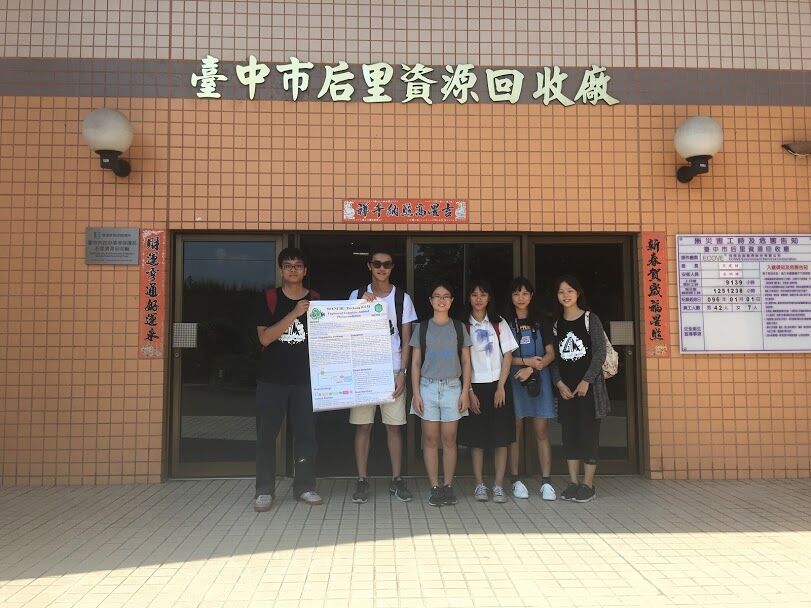Entrepreneurship
Introduction
Overview
After visiting and having discussions with Houli Refuse Incinerator Plant and China Petrochemical Development Corporation, we’ve got some ideas about entrepreneurship.


Problem
Concluded from the visits, we found that heat method, burning down dioxin with high temperature, is the major application in industries while microorganism method is rarely used. This is due to the uncertainty and technique limitation of applying this method. More research needs to be done before the method can be widely utilized. However, once it is being used, numerous advantages is sure to be obtained.
Solution
Since both the agencies mentioned above are eagerly looking forward to our result, it is our later work to repeat the test on our product, collaborate with agencies and bring our result out the lab to engineered-applied level.
Product
According to our project, Engineered Endophyte-Assisted Phytoremediation, we’re putting dioxin-degrade genes into plant. The plant is our product.
Business Model
KEY PARTNERS
- Houli Refuse Incinerator Plan
- China Petrochemical Development Corporation
KEY ACTIVITIES
- Research Development
- Product Development
- Ground Test
KEY RESOURCES
- Industries
- Eco-friendly Institutions
- Agricultural Chemicals and Toxic Substances Research Institute(TACTRI)
- EPA Environmental Inspection
APPLIED METHODS
- Plant Our Product in China Petrochemical Development Corporation
APPLIED FIELD
- Dioxin-polluted area
- Vietnam
COST STRUCTURE
- Research and Development
- Marketing
- Promotion
REVENUE STREAMS
- Direct income
- Government Subsidy
SALE CHANNELS
- Website
- Apps
- Market
- Plant stores
- Related Government Agencies
Marketing Analysis
SWOT Analysis
Strengths
- Product & Market Research
- Emphasis on environmental sustainability
- Company development through collaboration with China Petrochemical Development Corporation
- Product development
Weaknesses
- Experiment break through
- Foundation
Opportunities
- New product
- Potential for product patent
- Lower cost compared to other dioxin-break-down methods
Threats
- New application: lower acceptance
- With genetic modified microorganism: still a controversial issue
Agency and Enterprise Visit
Houli Refuse Incinerator Plant

We saw how garbage is being burned down and in order to avoid the production of dioxin(250 ℃ ~400 ℃ is especially significant), temperature is being controlled. In addition to this, after garbage is fully burned, two chemicals is formed: incinerator bottom ash and fly ash. Fly ash should be carefully coped with. They use active charcoal to stabilize fly ash and cleaned out with bottom ash together. Product such as brick is made by mixing ashes with concrete.
The major method using in the incinerator is heat method, as mentioned previously, breaking down dioxin by extremely high temperature. They’re interested in the method using in our project, microorganism method. Since dioxin is hydrophobic, it appears in soil most of the time. If we can successfully applied our method by phytoremediation, plant would be able to be cropped and break down dioxin in a nature way.
China Petrochemical Development Corporation

We got the permission to enter the most dioxin-polluted area in the world and got to know procedures they’re applying to break down dioxin in soil. The major methods are wet method and heat method while microorganism method is still under breakthrough. Since this method is what we’re doing, they are highly interested in and looking forward to our application later in the future.
Additionally, we had planted several of our experimental plant (Vetiveria zizanioides) in the area and will test the concentration of dioxin in the soil to if the plant is sure to break down dioxin few months later.
Analysis
Doubts
- The safety of our product should be carefully exercised.
- If the product does work, how’s the dioxin degradation rate?
Future Development
Once our product enters market in the future, further achievement and development should be done in order to meet needs of different companies in different area.
Following is the list:
- Increase research and development for higher degradation rate product.
- Develop a sensor of testing dioxin concentration that can be easily used under low cost.
- Think of proper promoting methods.
- Channeling resources into manufacturing to distribute our product on the market.
- Examine a faster way to manufacture our product.

